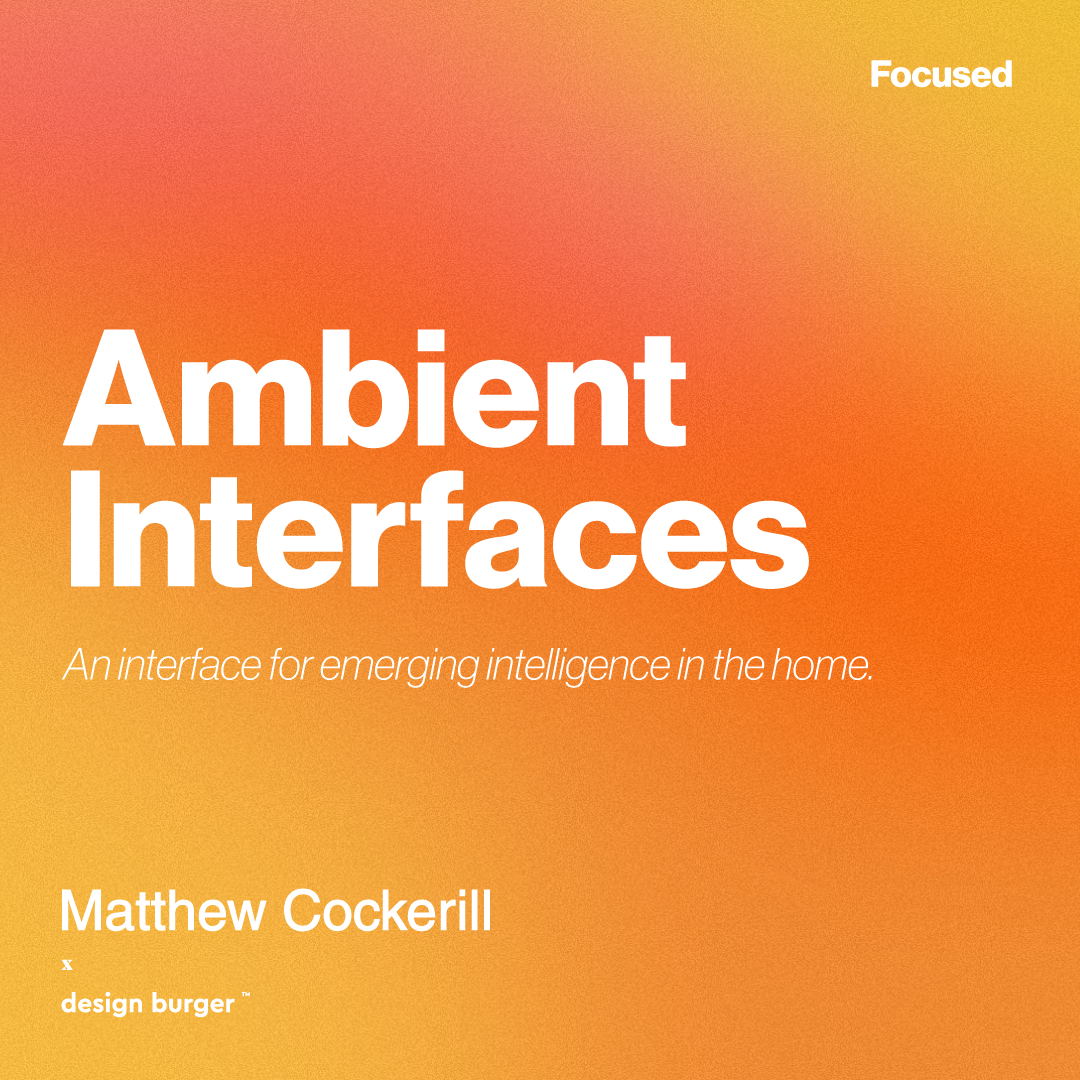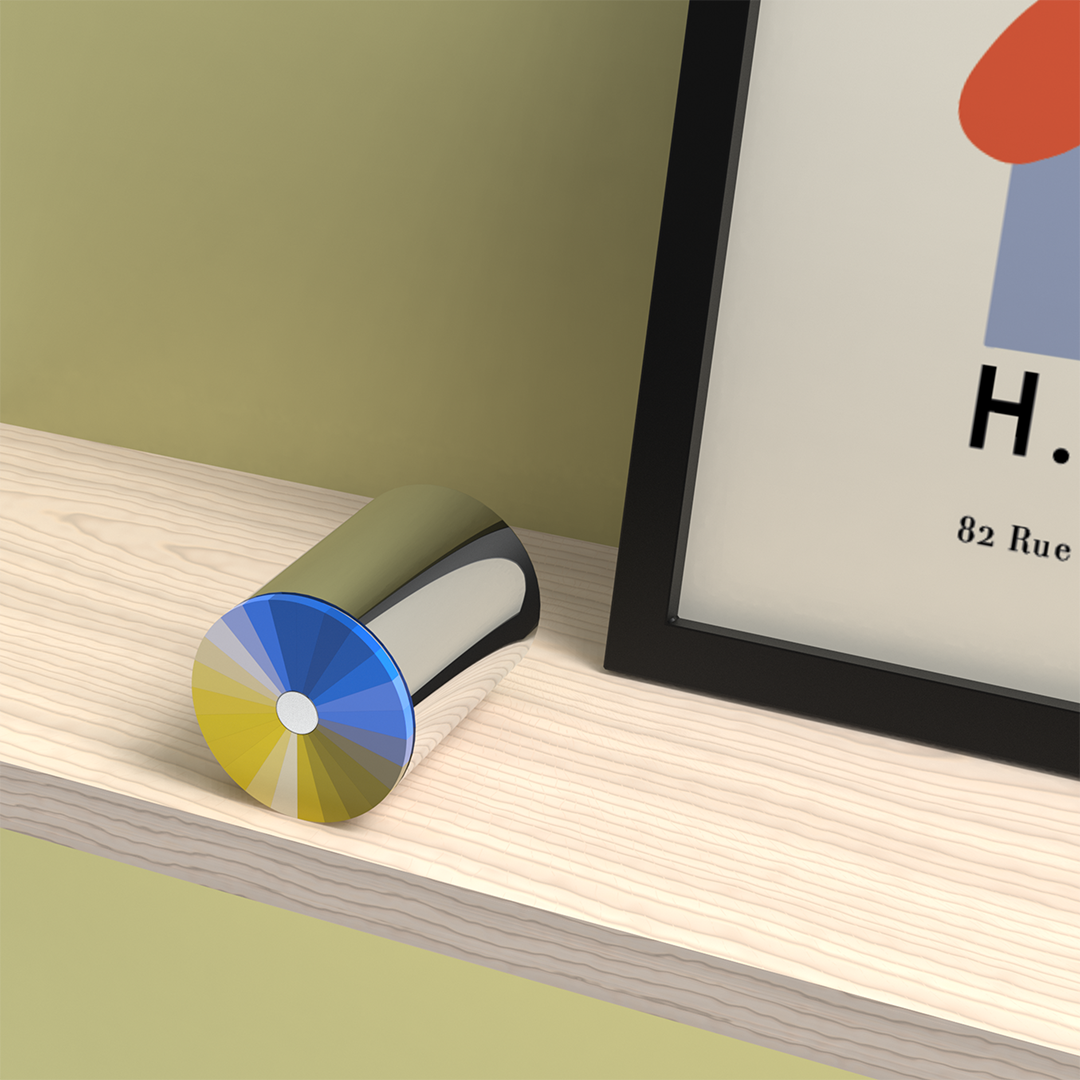An interface for emerging intelligence in the home.
Our homes are becoming increasingly smart as we adopt new connected products and services. Matthew has imagined a near-future user interface for our increasingly intelligent and responsive domestic spaces as they become the location for a wider set of activities.
A physical UI, called the Ambient Monitor, complements the future home environment and allows us, our family, and guests to know its level of intelligence. To understand the capabilities of the room, the level of technology observance and the appropriate social etiquette to adopt.
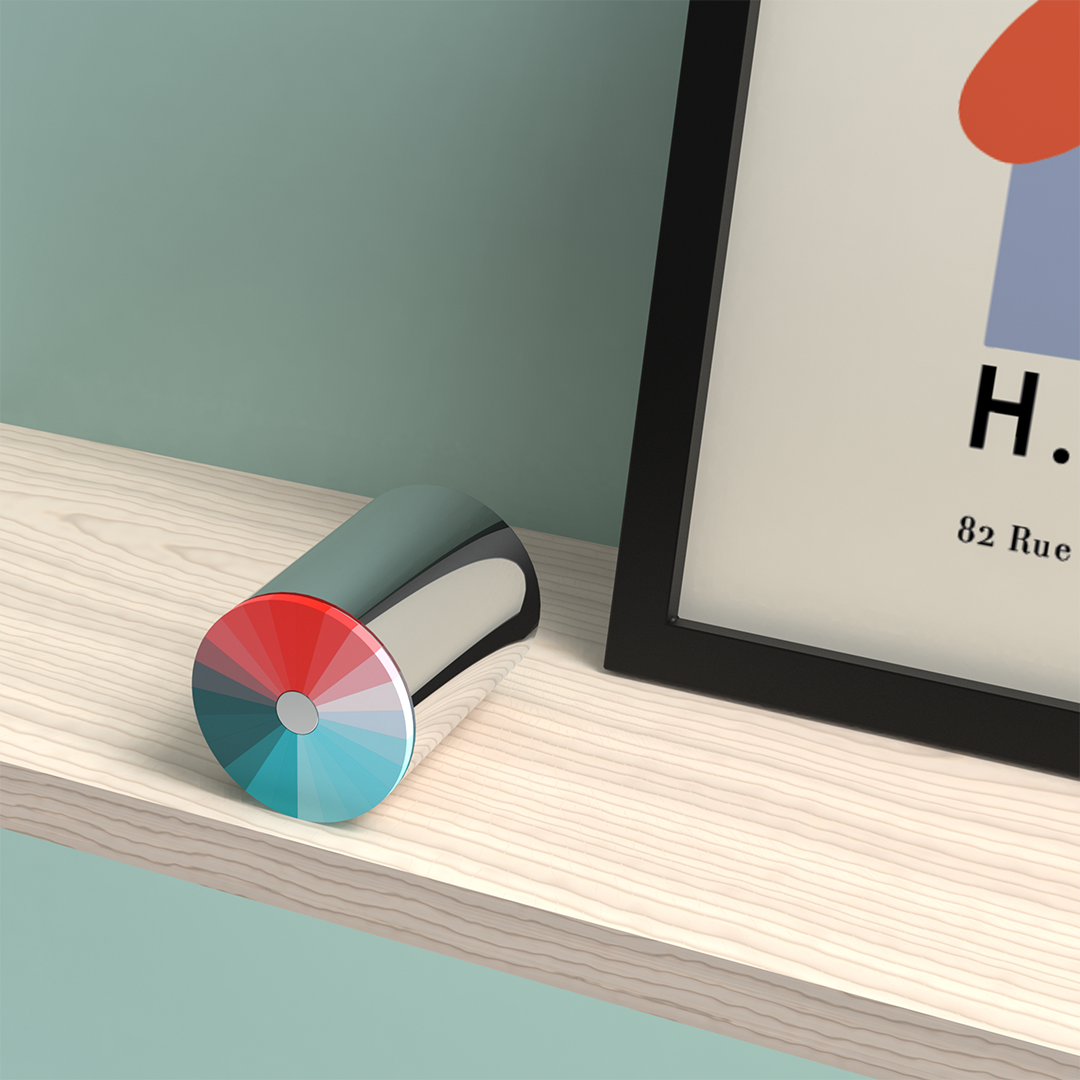
Changing Rooms
Technology has shaped our expectations of what activities are possible within the home environment. The Silent Generation (1928-45) and Baby Boomers (1946-64) experienced only one-way communication in a room through the emergence of early radio and television, whilst Generation X (1965-80) had more interactive two-way communication through screens initiated and controlled by us. We have now allowed our domestic spaces to become more porous to people and events in the outside world through increasingly sophisticated digital services: from the emergence of working from home enabled by email, hybrid work/collaboration, live online exercise classes and hanging out with remote friends through video streaming.
Emerging technologies in the home are often pioneered by the younger generation with different expectations of what might be possible. Generation Z (1997-2010) were raised in a touchscreen first world and in their early years tried to interact with our old TV and laptop screens by touching and swiping in the hope to deliver more interaction, much to the delight of parents and ethnographers. Now for Generation Alpha (2010 onwards), it’s perfectly reasonable for them to walk into an unfamiliar room, in say a friend’s house or holiday cottage, and expect to be able to speak to the room, ask a question or control a light. They automatically assume it is enabled by the invisible services of Alexa, Siri, or Google.
Voice assistants signal the beginning of a new age of spatially based ambient computing where interactions beyond screens are simply initiated by our presence, identity, behaviours, and gestures. Where technology increasingly disappears into the fabric of our homes. So, mismatches in the affordance of our domestic spaces like speaking to a room without Alexa, highlight the future need for a new kind of interface for our ambient technologies.
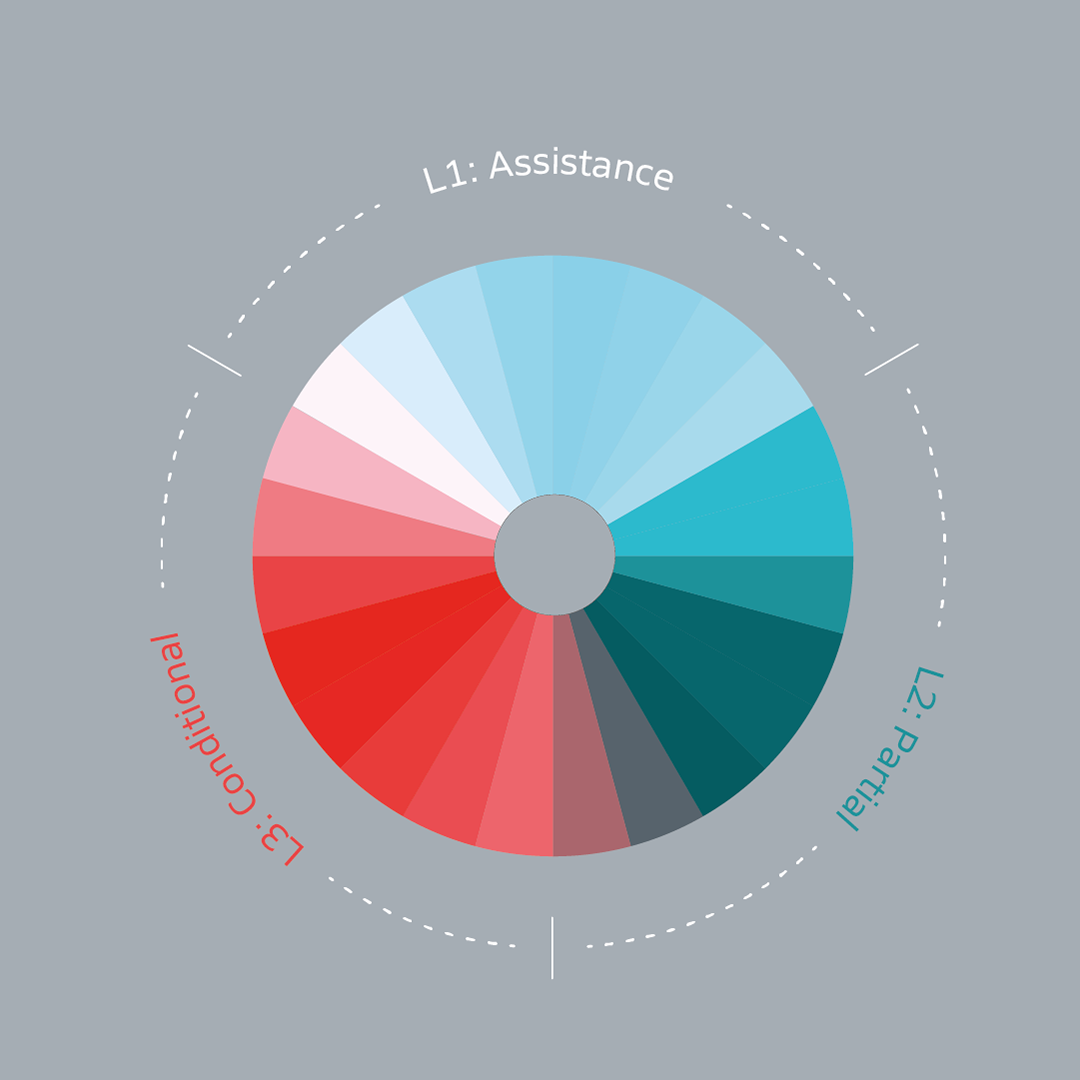
Ambient intelligence levels
The Ambient Monitor user interface is a physical device that visually communicates the nature of a room’s ambient intelligence and capabilities by rotating to one of three positions. Observing the technology monitoring you and your space, moment by moment, it detects the active technologies and gives you, your family, and guests a sense of awareness of the changing levels of observance and intelligence. To understand what activities are possible, the etiquette to adopt and behaviours they might be comfortable with.
Matthew sees the ambient intelligence of our future domestic spaces framed in a similar way to levels of autonomous driving in cars. Whilst cars will possibly undergo a gradual progression to full autonomy, our shared domestic spaces will need to manage variable levels of intelligence and autonomy based on the technology installed and the individuals, family groups and guests present at any one time.
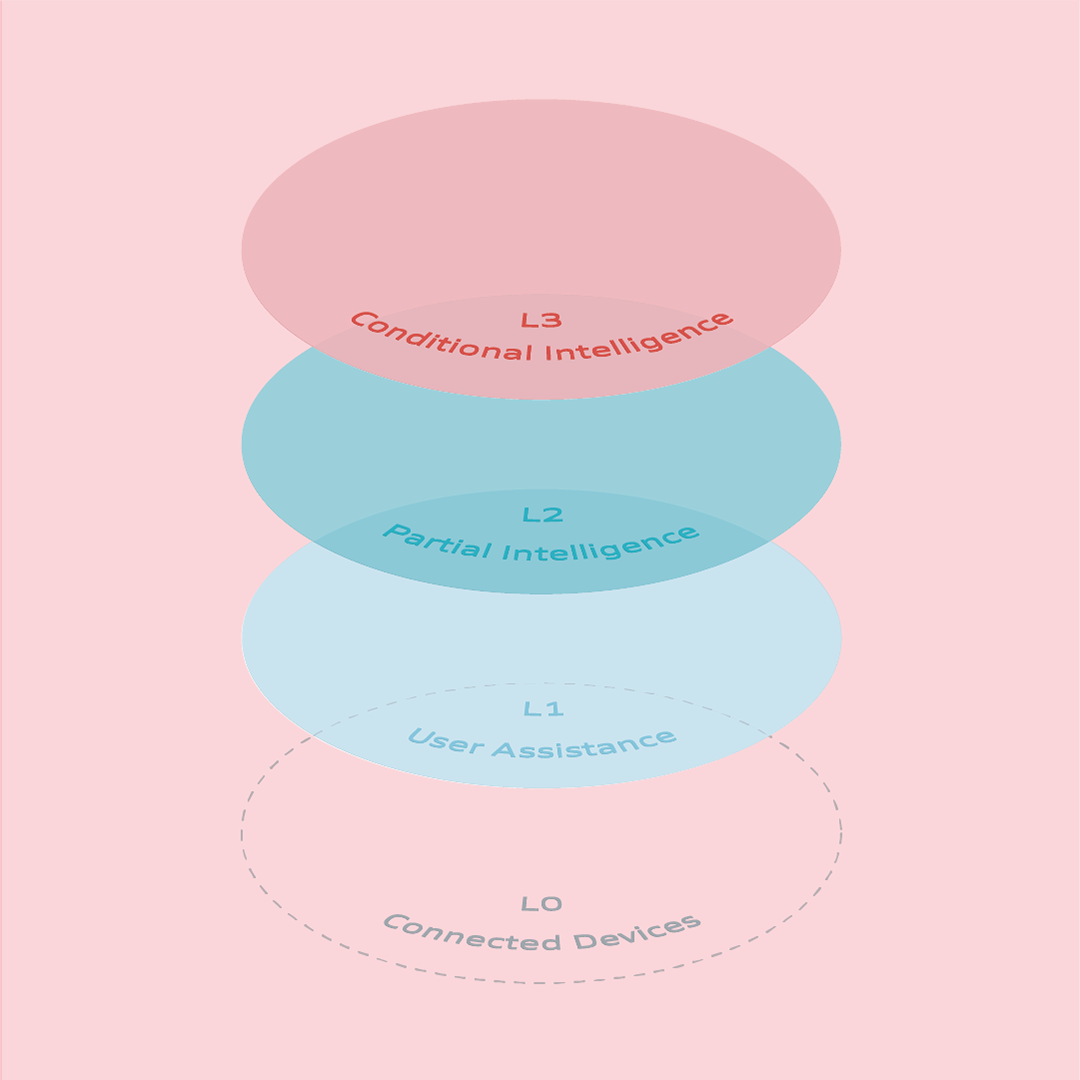
Level 0: Connected smart devices Certain products in the room are embedded with processors, sensors, and software with the ability to connect to cloud services and other devices. Examples include a smart TV, thermostat or smart light.
Level 1: User assistance A single automated system for individual control in the room. For example, smart speakers with voice assistance to allow individual control of lighting, temperature and utilising automatic speech recognition.
Level 2: Partial intelligence The system has a greater awareness of the surroundings and people in it and performs more complex functions through computer vision, enabled by RGB and infrared cameras, radar, and Wi-Fi sensing. For instance, you might point at a particular light and ask Alexa to “dim that light” or start a fitness session automatically just by warming up. A service like Peloton would understand what you are wearing, the activity you are starting, and provide a guided yoga session based on your exact real-time poses. Giving feedback to improve your practice.
Level 3: Conditional intelligence The system has an even greater understanding of the surroundings, the objects in them and your biological condition and intentions. It will be able to make informed decisions for itself without the need for constant direct human commands or intervention and understand what you might be reading, writing or how you are feeling. As a result, the room’s environment might automatically adjust to provide you with the perfect environmental conditions. Another option is taking part in a live metaverse experience through the autonomous orchestration of our physical world with the digital world to deliver convincing immersive participatory experiences.

Thinking back from the future
Ambient Monitor is a speculative design. Not intended for production, but to help us think back from a possible future world where we can imagine new opportunities and anticipate new challenges of our shared relationships with increasingly ambient, sentient, and invisible technology. To make sure we remain in control, giving us a sense of agency over our future intelligent domestic spaces as they become the location for a more radical and profound set of activities beyond screens.
View the project on Matthew’s site.
